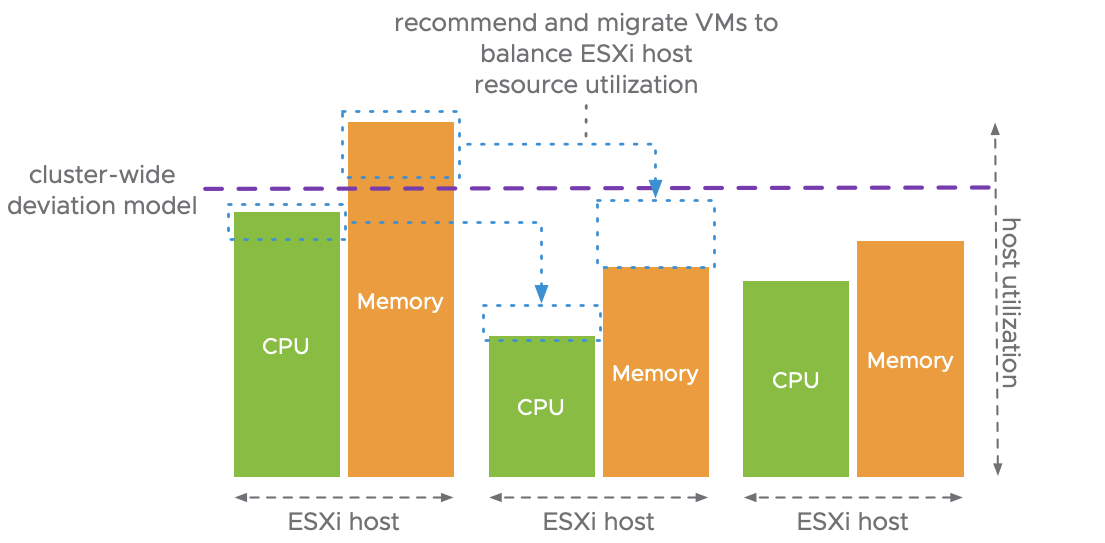
- Vmware vsphere 6.5 host resources deep dive update#
- Vmware vsphere 6.5 host resources deep dive series#
When you add a new host to a vSphere HA cluster, an agent is uploaded to the host and configured to communicate with other agents in the cluster. Here’s a handy video VMware made explaining how vSphere High Availability Clusters work: vSphere FT allows for no service interruption, while vSphere HA allows for a minimal service interruption.

Note the distinction between vSphere HA (High Availability) and vSphere FT (Fault Tolerance). Hosts in the cluster are actively monitored through a network and datastore heartbeating and if a failure occurs, the virtual machines on failed hosts are automatically restarted on alternate hosts. vSphere HA provides high availability for virtual machines by pooling the virtual machines and the hosts they reside on into a cluster of ESXi hosts. Before we get into building vSphere HA clusters, let’s go over how vSphere HA works. VSphere HA clusters allow ESXi hosts to work together as a group and provide performance assurance and higher levels of availability for hosted virtual machines.
Vmware vsphere 6.5 host resources deep dive update#
Part 6: vSphere Deployment: Configuring vSphere Update Manager (VUM) in vCenter 6.5 Part 5: vSphere Deployment: Configuring a Datastore Cluster in vCenter 6.5 Part 4: vSphere Deployment: Configuring Traditional Storage in vCenter 6.5 Part 3: vSphere Deployment: Configuring an HA Cluster in vCenter 6.5 Part 2: vSphere Deployment: Deploying the vCenter Server Appliance 6.5 Part 1: vSphere Deployment: Deploying ESXi 6.5 to a Host
Vmware vsphere 6.5 host resources deep dive series#
Why Intel's Data Plane Development Kit significantly boosts packet processing performance.VSphere Deployment is a 6 part series that will walk you through deploying and configuring the components of vSphere 6.5. Tune VMkernel components to optimize performance for VXLAN network traffic and NFV environments. What queues are and where they live inside the end-to-end storage data paths. Why 3D XPoint is perfect for the vSAN caching tier. How TLB works and why it is bad to disable large pages in virtualized environments. How the 3-DIMMs per Channel configuration results in a 10-20% performance drop. Discover how vSphere Balanced Power Management takes advantage of the CPU Turbo Boost functionality, and why High Performance does not. Optimize your workload for current and future Non-Uniform Memory Access (NUMA) systems. This book explains the concepts and mechanisms behind the physical resource components and the VMkernel resource schedulers, which enables you to: It’s about understanding them end-to-end. It’s about having a passion for these details. Knowing your systems inside and out is the only way to be sure you’ve properly handled those details.

Especially for distributed platforms which abstract resource layers, such as NSX and vSAN. The reality is that specifics of the infrastructure matter. We can make the currently running ones consistently faster by deeply understanding and optimizing our systems. This book shows that we can fundamentally and materially improve the systems we’re building. Written for administrators, architects, consultants, aspiring VCDX-es and people eager to learn more about the elements that control the behavior of CPU, memory, storage and network resources. The VMware vSphere 6.5 Host Resources Deep Dive is a guide to building consistent high-performing ESXi hosts. Vmware Vsphere 6.5 Host Resources Deep Diveįrom the author of the vSphere Clustering Deep Dive series.


 0 kommentar(er)
0 kommentar(er)
